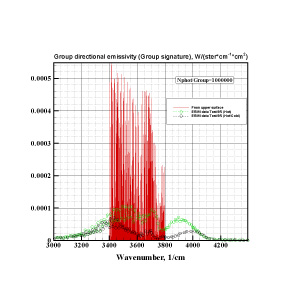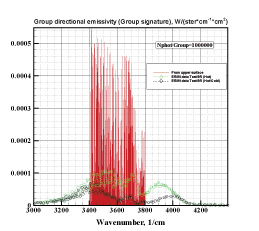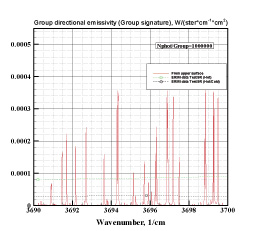The spatial models of radiation of jets of combustion products of rocket engines
Main results
Actual problems
-
Creation of a database of spectral optical properties of the emitting gases at high temperatures taking into
account the fine structure of the rotational spectrum and the nonequilibrium excitation of molecular components;
-
Development of new Monte Carlo algorithms (including algorithms for parallel computing) for calculation of the spectral
emissivity with and without consideration of the fine rotational structure;
-
Calculation of signatures of emitting objects taking into account fine rotational structure of the spectrum;
-
Development of 3-dimensional models taking into account the spatial and temporal fluctuations and nonequilibrium radiation.
The development of algorithms of local sampling for simulation of signatures
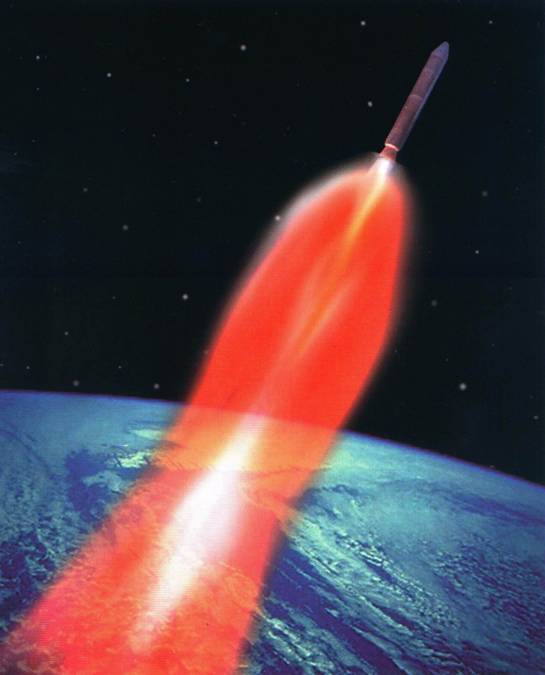
|
- Generation of quasi-random numbers;
- Calculation of the angular coordinates of the isotropic and anisotropic random unit vector;
- Statistical estimation of the initial coordinates of the trajectories of photons;
- Calculation of the trajectory of group of photons in an inhomogeneous medium;
- Simulation of the mean free path;
- Statistical estimation of collision processes of photons with particles of the medium;
- Calculation of the probability of absorption or scattering of group of photons;
- Assessment of the contribution to the radiation after each elementary act of interaction of group of photons with particles of the medium;
- The calculation of the spectral intensity based on the results of simulation;
- The calculation of the spectral flux of thermal radiation;
- Evaluation of the statistical error of the simulation results.
|
Temperature of the gas (left) and of the condensed phase (right) in the axisymmetric jet
The temperature of the gas in the block jet
The integral emissivity of the 3 block jet of the first type with a high level of scattering
Nph=106,
where Nph - number of photon
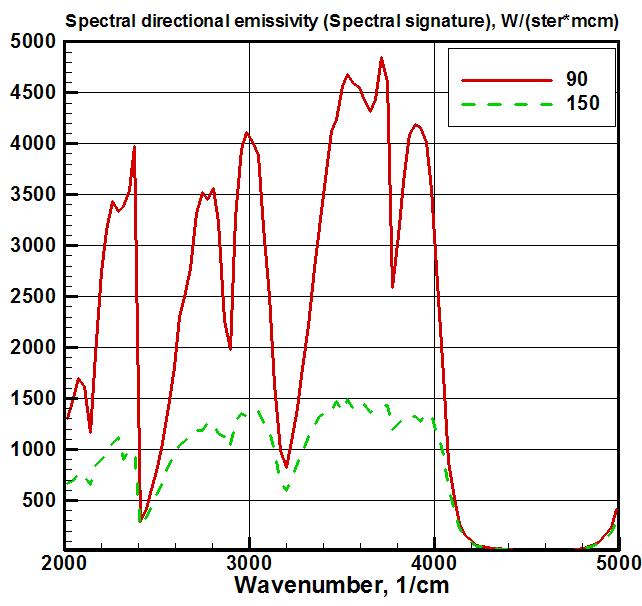 (a) (a) |
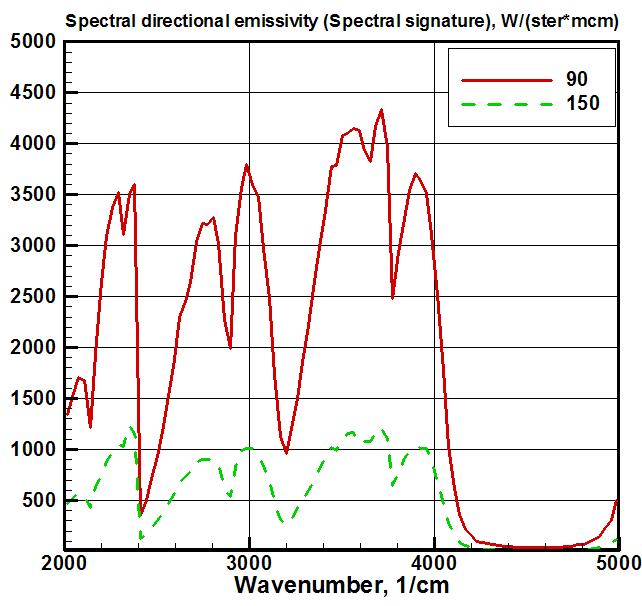 (b) (b) |
The spectral signature of a tactical missile with fuel based on AP/HTPB:
a) xAl2O3=0.0005, rp=1.0 μm, NAl2O3=4.04*104 cm-3;
b) xAl2O3=0.05, rp=1.0 μm, NAl2O3=4.25*106 cm-3.
The prediction of the spectral directional emissivity of a cylindrical volume (H2O/N2) at high temperatures
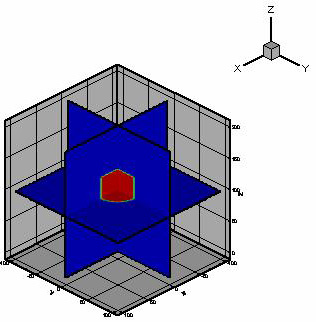
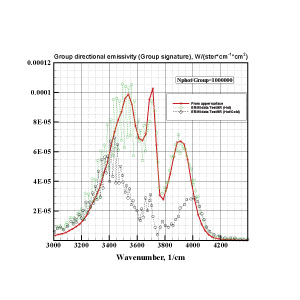 (a) (a) |
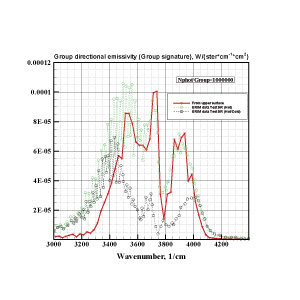 (b) (b) |
Interpretation of ERIM experimental data:
a) Spectral optical model with averaging on 25 cm-1;
b) Optical model based on the HITRAN data.
The prediction of the spectral directional emissivity of a cylindrical volume (CO2/N2) at high temperatures
Interpretation of ERIM experimental data (results were obtained using temperature extrapolated HITRAN data):
a) Averaging over the rotational structure (JLBL=0, JSUM=1);
b) Averaging over the rotational structure (JLBL=0, JSUM=0);
c) A statistical model of the rotational lines (JLBL=3).
The prediction of the spectral directional emissivity of a cylindrical volume (CO2/N2), weakned by a cold gas
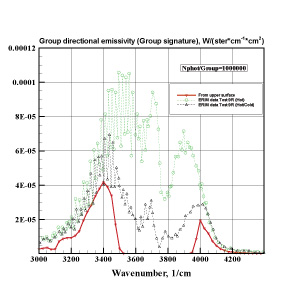 (a) (a) |
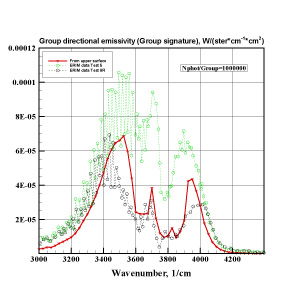 (b) (b) |
Interpretation of ERIM experimental data (results were obtained using temperature extrapolated HITRAN data):
a) A statistical model of the rotational lines (JLBL=2, approximation of the weak line),
a spectral group model 25 cm-1;
b) A statistical model (JLBL=2), a spectral group model 25 cm-1.
The prediction of the spectral directional emissivity of a cylindrical volume (CO2/N2), weakned by a cold gas
Interpretation of ERIM experimental data. Line-by-line calculations with the spectral resolution of 0.0083 cm-1

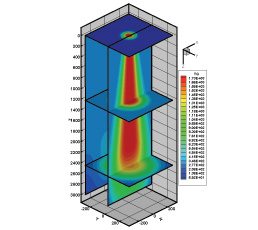
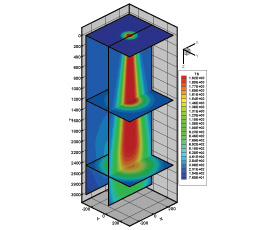
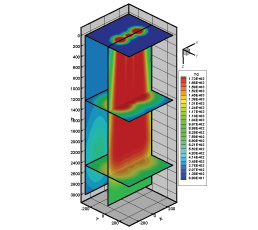
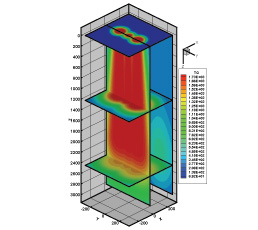
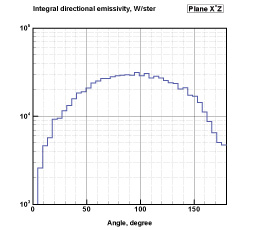
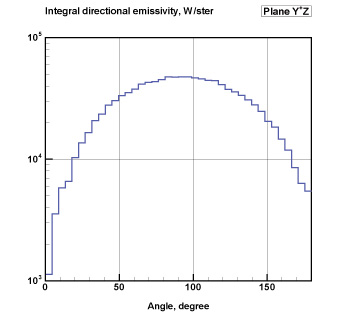
 (a)
(a) (b)
(b)
 (a)
(a) (b)
(b)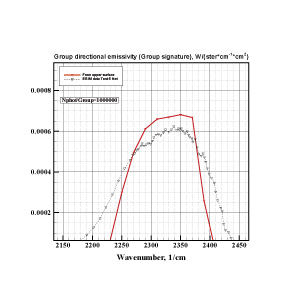 (a)
(a)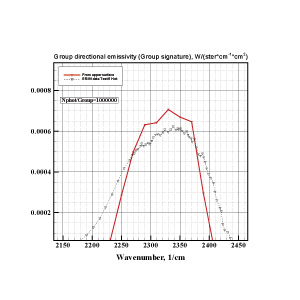 (b)
(b)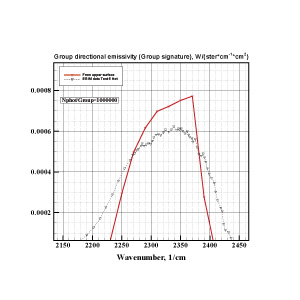 (c)
(c) (a)
(a) (b)
(b)